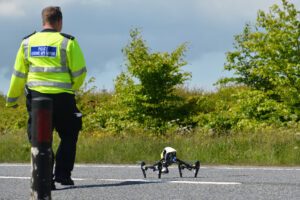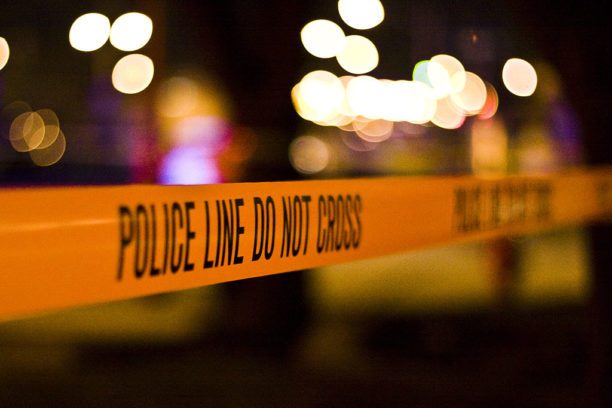
Are emergency services agencies and police using drones in the best way to serve communities? It’s a tricky question, and one at the forefront in the drone industry. As technology like facial recognition develops, communities are concerned with the expansion of drones in public agencies – creating a difficult environment for public safety drone programs to navigate.
DRONERESPONDERS Public Safety Alliance is a non-profit program that helps first responders, public safety, and emergency management professionals implement and maximize UAS technology. DRONERESPONDERS and their partners have been trying to help public safety agencies negotiate the current environment: getting the best use out of drone technology to increase safety for their teams and their communities, while ensuring that issues of privacy and individual rights are respected.
“While every public safety agency should have access to the transformative potential of drone technology, this new tool must be used in a responsible manner that acknowledges the importance of community engagement and the protection of privacy and civil liberties,” says DRONERESPONDERS.
“This commitment has never been more important. In recent months, the use of drone technology by first responders has attracted scrutiny and criticism. This environment represents an opportunity for the public safety community to affirm a set of shared values designed to promote responsible use and preserve the trust given to first responders.”
Today, DRONERESPONDERS announced the release of The Five C’s: Principles on the Responsible Use of Drones by Public Safety Agencies, which provide a powerful new tool to help guide the development and deployment of drones by first responders.
“While there is no shortage of materials on the development of public safety drone programs, the existing maze of reports–from DOJ, IACP, and civil society organizations–can be difficult to navigate and even more challenging to implement,” says the DRONERESPONDERS press release. “The Five C’s distill key concepts to provide clear guidance that is easy to apply in practice.”
The 5 C’s make it easier for police using drones to address critical community concerns.
1. Community Engagement and Transparency
-
Public service is a public trust. When developing and operating a drone program, it is critical to engage in an ongoing conversation with the community you serve. Effective community engagements consists of two parts: public participation and transparency.
2. Civil Liberties and Privacy Protection
-
Every drone program should be predicated on the protection of privacy and the promotion of civil liberties. Agencies should develop safeguards and training procedures that advance those objectives across every element of the program.
3. Common Operating Procedures
-
Departments should develop and adopt common operating procedures to guide the use of drones. The Five C’s provide a roadmap for the development of operating procedures that account for best practices in the field on topics such as FAA compliance and video management practices designed to protect privacy.
4. Clear Oversight and Accountability
-
Agencies need to establish robust oversight measures designed to ensure compliance and accountability, along with clear oversight processes that combine both internal and external measures.
5. Cybersecurity
-
Modern drones are more than simple flying machines. Drones have become network-connected devices that should be subject to cybersecurity reviews.
“These principles are designed to establish a clear path forward and a firm foundation on which to build public safety UAS programs that will promote responsible use and public trust,” said Chief Charles Werner (Emeritus-RET), the Director of the DRONERESPONDERS Public Safety Alliance. “It excites us to know that first responder agencies now have a solid set of principles to operate in the safest and responsible manner possible.”
“The Five C’s are designed to get new drone programs off the ground and enable existing programs to truly flourish,” stated Chad Karlewicz, DRONERESPONDERS’ Deputy Director and Commander with the Renton Police Department.
DRONERESPONDERS developed these principles with the support and assistance of Skydio, the largest U.S. drone manufacturer. Skydio’s new X2 series offers a rugged airframe combined with their groundbreaking autonomous platform: an offering designed to meet the needs of public service agencies. “Skydio is thrilled to collaborate with DRONERESPONDERS to support the responsible use of drone technology,” said Brendan Groves, Skydio’s Head of Regulatory and Policy Affairs, who formerly led and scaled the U.S. Department of Justice’s (DOJ) drone program. “Drones are indispensable tools for first responders. The Five C’s present a clear and compelling vision of principles that will provide a strong foundation for the future.”
Miriam McNabb is the Editor-in-Chief of DRONELIFE and CEO of JobForDrones, a professional drone services marketplace, and a fascinated observer of the emerging drone industry and the regulatory environment for drones. Miriam has penned over 3,000 articles focused on the commercial drone space and is an international speaker and recognized figure in the industry. Miriam has a degree from the University of Chicago and over 20 years of experience in high tech sales and marketing for new technologies.
For drone industry consulting or writing, Email Miriam.
TWITTER:@spaldingbarker
Subscribe to DroneLife here.
